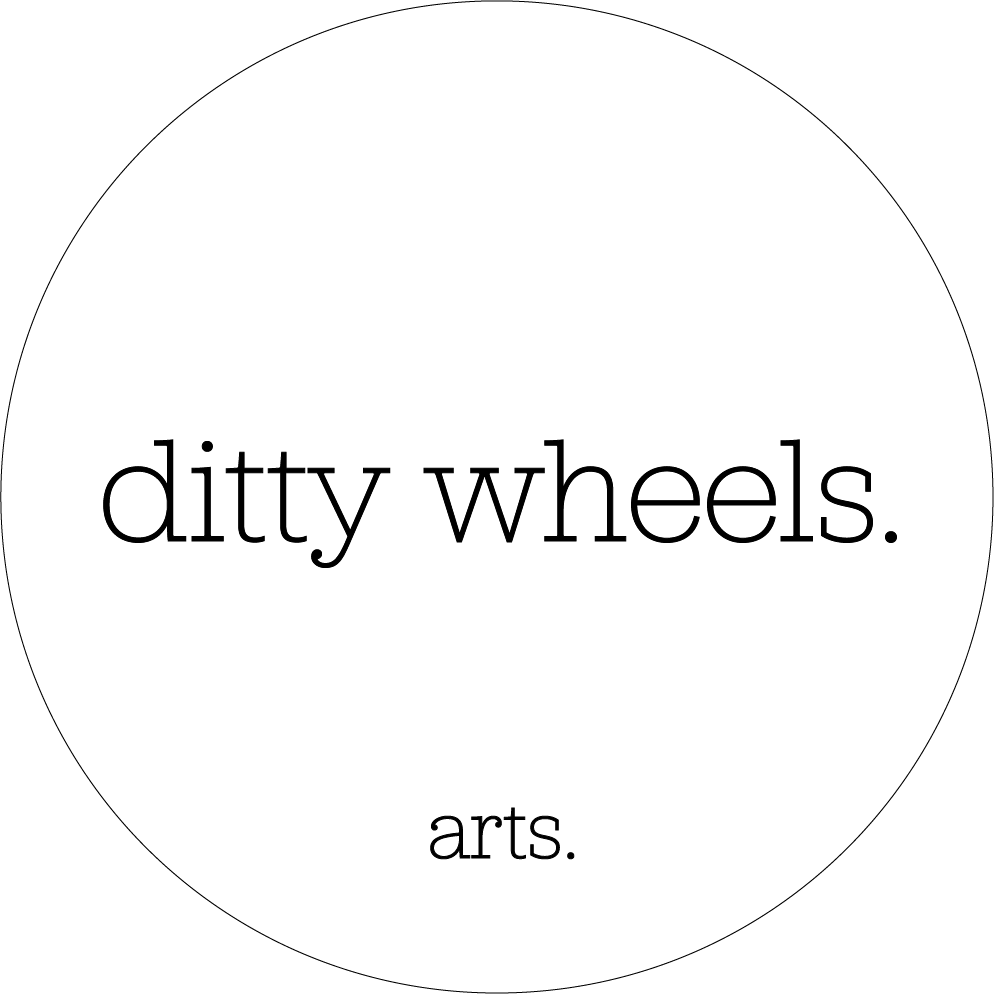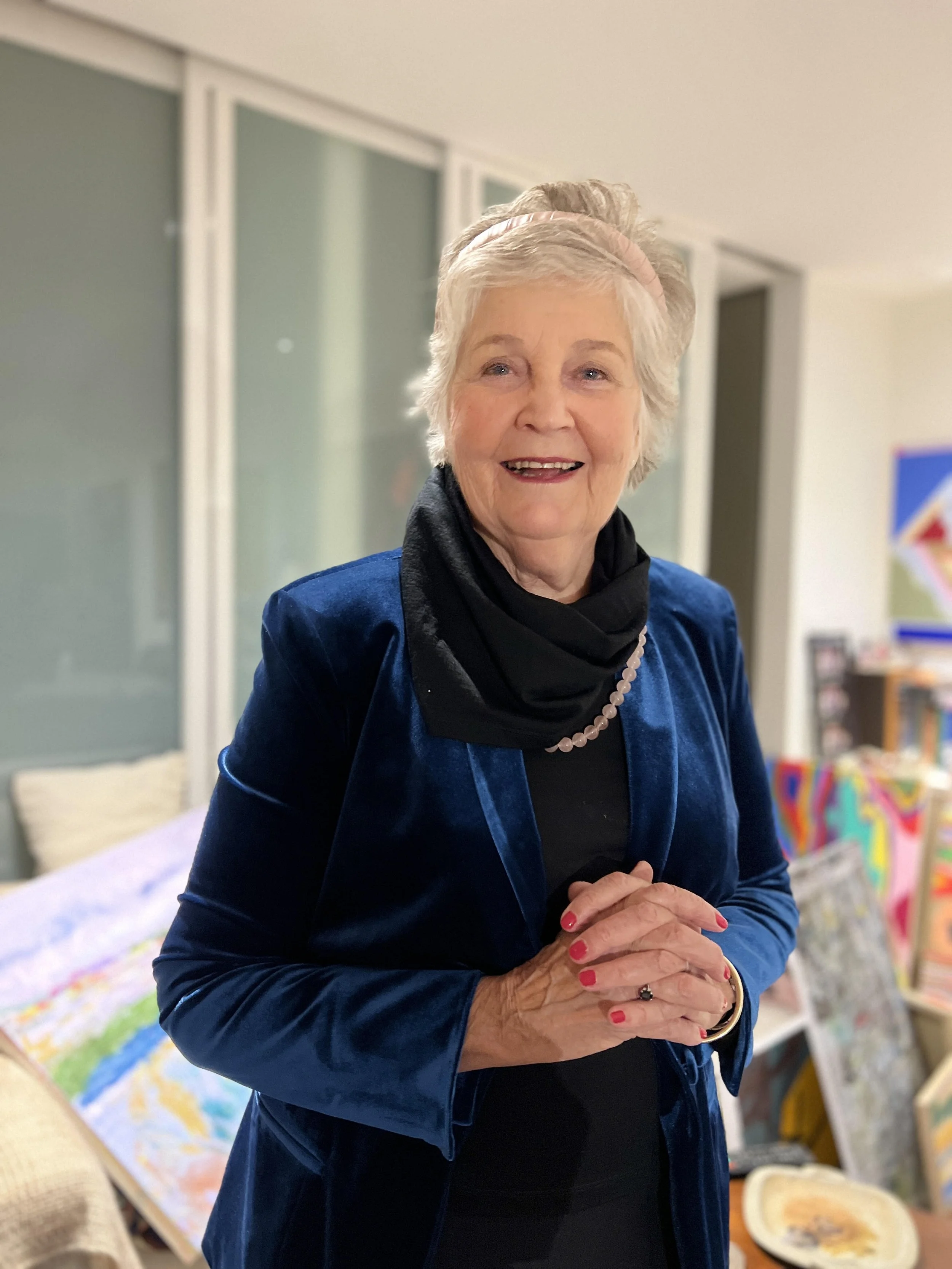Virginia Lydiard
"When you're a prosecuter, you're given a case, you get all your material and prepare it all perfectly, but once you go into court you have no idea how it's all going to go. Art is the same. You have all these marvelous ideas, you have the canvas, you have the paints and yet you have no idea how it'll turn out.”

reflections in an Oil Spill' 77cmx77cm Acrylic on Canvas $2500

'Out of Africa' 77cm x 77cm Acrylic on Canvas $1800

'Lightness 6 - Quagmire' 90cm x 120cm Acrylic on Canvas $3400
Virginia Lydiard Interview
Virginia Lydiard Interview
From the Bar to NAS/A life of parallels - The woman who fell in love with the line.
There is something somewhat nerve-wracking about a woman like Virginia Lydiard telling you she looks forward to reading what you write about her. She is both staggeringly impressive and humbly pleased with her life, and an hour's interview slipped by - I suspect I heard only the tip of her iceberg. Tough, capable country girl, politician's wife and campaign aide, mother of three, barrister, crown prosecutor, NAS student, and now, in her 80th year, an exhibiting artist. See what I mean?
A future formidable law career was hardly belied by Virginia's university record - her determination to do well academically was somewhat waylaid by falling in love. Happens to the best of us, Ginia!She went on to teach English and History until her husband stood for the Federal Seat of Calare as a politician. Her efforts were then divided between raising her children and supporting her partner on his campaign. When the inevitable tides of politics changed, Virginia looked about - her marriage was failing, her kids needed her far less, and she'd all but given up teaching. During a chat with a friend, she voiced her desire to study law - hardly a common vocation for women at the time. In what Virginia sees as a sliding doors moment, her friend uttered a throw away line "if you want to do it, do it." Speaking to Virginia, you get the impression that those eight syllables set the tone for the rest of her life.
With the companionship of another local woman, Virginia studied law via correspondence at Macquarie Uni. She eventually transferred to Grad Law at UniNSW, and finished in two and half years (turns out focusing is a lot easier when you don't have some bloke on your tail!) When the option of becoming a solicitor first or going straight to the Bar came up, the decision was made by circumstance; she needed to be around for her kids during holidays, and no newly appointed solicitor was coming up for air any time soon. So, barrister it was. 35 trail-blazing years later, including being one of the first few women admitted to the Bar in NSW, Virginia put down the wig, and picked up the brush.
Somewhat like law, Virginia's pathway to art was facilitated by the right words, from the right person, at the right time. She and her son, Jock, had booked into a summer course at NAS. She'd smashed her right shoulder but was determined to do the class (you notice, in a conversation with Virginia, how many times the word "determined" quietly comes up.) While she was painting away with her left hand, which she claims are still some of her favourite paintings, her teacher Kim Spooner asked her what she'd like to do when she retired from law. "I don't know, Kim, but I have to do something," was the response. In none too fine a wording, Kim convinced Virginia that 75 was exactly the right age to join the National Art School.
Duly egged on, Virginia got together a portfolio and glided into the hallowed halls of NAS - just as Covid hit. The first two years of her new pursuit were online, which suited her down to the ground. As the youngest of four kids growing up in the bush, Virginia feels very much at home in her own company, and thrived making art by herself. When the world finally got to its feet, she returned to physical classes, in time for NAS' famous Margaret Olley Drawing Week, an intensive immersion process. One of the cues given was as basic as "go anywhere, doesn't matter where, and draw something, doesn't matter what." Virgina returned to her table to gather herself, and was immediately brought into the whorls and grains of the timber and its generations of paint splotches. She threw a piece of paper over it and traced the swirling topograhy. In that moment, she tells me, "I fell in love with the line."
Her devotion to the line was strengthened while recovering from spinal fusion surgery, during which time her capacity to stand at an easel was limited. A trip to an arts store supplied her with a board she could lean on while sitting. Echoing her experience at that fateful schoolroom table, those lines became a focal point for her and produced an entire body of work, at once both psychedelic and calming. "Every line," she tells me, "sings its own song. You just have to follow them, and the composition comes." Virginia, still harbouring a healthy obsession with the line, then moved onto her canvas work. Drawing on her life-long love of nature and bolstered with a freshly developed artist's lens, she found new lines in the treescapes. She projected those images onto canvas, dividing them by the trees' lines, and attended colourfully to the negative space. Asking her about her "Painted Tapes" series, she bursts out laughing. "I peeled away the tape holding my paper to the easel and stuck it to the wall. My teacher came in, aligned them on a board and told me "look, you've got an artwork!"" I have to say, this writer tends to agree with him. They are fleeting and fine, and look purposefully, if nonchalently, put together. I tell her they are some of my favourite pieces, and she is delighted. "Accidental art?," I suggest. "Accidental art," she decides.
While fine art and law might seem like the most distant of cousins, Virginia insists there are several similarities. "When you're a prosecuter, you're given a case, you get all your material and prepare it all perfectly, but once you go into court you have no idea how it's all going to go. Art is the same. You have all these marvelous ideas, you have the canvas, you have the paints and yet you have no idea how it'll turn out." The capacity for intense focus over prolonged periods is also common to both. In fact, Virginia turned to art, in a more rudimentary sense, during her law career. She relied on endless doodles to concentrate during cross examinations. The trained artist in her now ruefully wishes she'd kept them - "they'd make a great exhibition!" Well, you know what they say about hindsight.
I ask Virginia what's next for her art career, and she sighs with happiness. "I really don't know, and that's the beauty of it!" While she has some ideas - a small business printing scarves from her artwork, further study, more exhibitions - her openness to her future is something that echoes back through her past. In a world of set ways and assumed paths, Virginia has made a career of doing the opposite, and following her own line.

